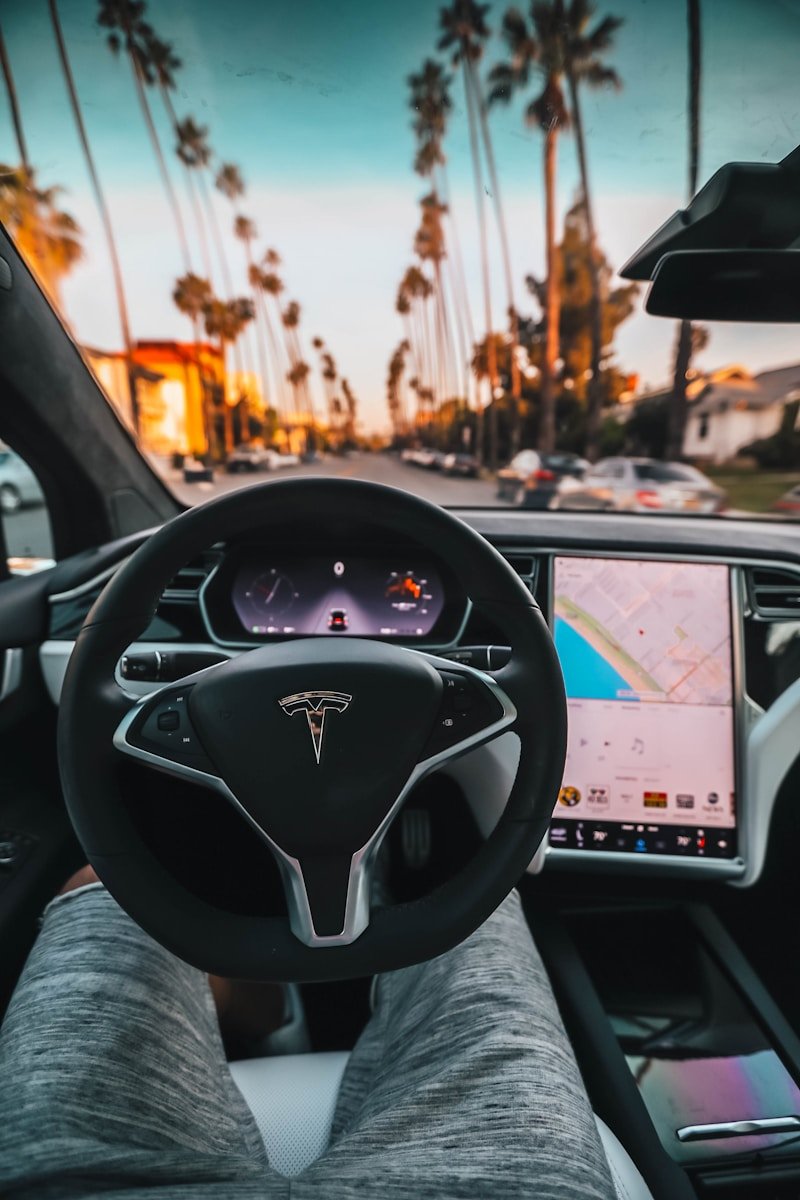How Do Self-Driving Cars Work

How Do Self-Driving Cars Work
Self-driving cars, also known as autonomous vehicles (AVs), are a groundbreaking advancement in modern transportation. These vehicles use a combination of artificial intelligence (AI), sensors, cameras, and advanced computing to navigate roads and make driving decisions without human intervention.
The core technology behind self-driving cars includes:
- Sensors and Cameras: These are crucial for detecting obstacles, lane markings, pedestrians, and traffic signals. Lidar (Light Detection and Ranging) sensors use laser beams to create a 3D map of the car’s surroundings.
- AI and Machine Learning: Advanced algorithms analyze sensor data to identify objects, predict their movements, and make driving decisions.
- Radar and Ultrasonic Sensors: Radar helps detect objects at longer distances, especially in poor weather conditions, while ultrasonic sensors assist in parking and close-range detection.
- Computing Power: Self-driving cars are equipped with high-performance processors capable of making split-second decisions by analyzing vast amounts of data in real time.
- Connectivity: Some autonomous vehicles rely on cloud-based updates, allowing them to share real-time traffic and road condition data.
Do Self-Driving Cars Need WiFi?
Self-driving cars do not necessarily require WiFi to operate, but connectivity enhances their performance and safety.
- Offline Operations: Most autonomous vehicles have onboard AI and computing power that allow them to function without an active internet connection. They can drive, detect obstacles, and make decisions based on their built-in systems.
- Cloud Connectivity: WiFi or cellular data enables self-driving cars to receive software updates, download high-definition maps, and share real-time traffic data. This is especially useful for improving AI learning and route optimization.
- Vehicle-to-Vehicle (V2V) and Vehicle-to-Infrastructure (V2I) Communication: WiFi or 5G allows AVs to communicate with other cars and traffic management systems, reducing accidents and congestion.
Do Self-Driving Cars Use Satellites?
Yes, self-driving cars use satellites, but not in the way traditional GPS-based navigation systems do.
- Satellite Navigation (GPS): Autonomous vehicles use GPS signals from satellites to determine their global position and navigate roads.
- High-Definition (HD) Maps: Some self-driving systems use satellite imagery to enhance their understanding of road layouts, elevations, and obstacles.
- Satellite Internet: In remote areas where cellular networks are weak, satellite internet connections (such as Starlink) can provide crucial data to self-driving systems.
Do Self-Driving Cars Rely on GPS?
Yes, self-driving cars heavily rely on GPS, but they do not depend on it entirely.
- Primary Navigation: GPS provides basic location and route guidance for AVs, helping them plan journeys.
- Backup System: Since GPS can be affected by signal loss (e.g., in tunnels or urban canyons), AVs also rely on other sensors and mapping technologies to maintain precise positioning.
- Augmented GPS (RTK GPS): Some self-driving systems use Real-Time Kinematic GPS, which provides centimeter-level accuracy compared to standard GPS, ensuring precise lane positioning.
Do We Really Need Self-Driving Cars?
The necessity of self-driving cars is a topic of debate. Here are some of the key reasons why autonomous vehicles could be beneficial:
- Reduced Accidents: Most car accidents are caused by human error. Self-driving cars could significantly reduce accidents by eliminating distractions, fatigue, and reckless driving.
- Increased Mobility: Autonomous vehicles could provide transportation for individuals who are unable to drive, such as elderly people or those with disabilities.
- Improved Traffic Efficiency: AVs can communicate with each other and traffic management systems, reducing congestion and optimizing traffic flow.
- Fuel Efficiency and Lower Emissions: Self-driving cars could reduce fuel consumption through optimized driving patterns, leading to lower emissions.
- Economic Benefits: The self-driving industry has the potential to create new jobs, improve logistics, and enhance delivery services.
What Are the Negatives of Self-Driving Cars?
Despite their potential benefits, self-driving cars come with several disadvantages:
- High Costs: The development and implementation of AVs require expensive technology, making them costly for consumers.
- Cybersecurity Risks: Autonomous vehicles are vulnerable to hacking, posing serious security threats if someone gains unauthorized control.
- Ethical Dilemmas: AI-driven cars face ethical challenges, such as how to make decisions in unavoidable accidents (e.g., choosing between hitting a pedestrian or swerving into another vehicle).
- Job Losses: Automation in transportation could lead to job losses for truck drivers, taxi drivers, and other professionals in the driving industry.
- Legal and Liability Issues: Determining who is responsible in case of an accident involving an AV is legally complex.
- Limited Functionality in Extreme Conditions: Self-driving cars struggle with heavy snow, fog, and complex urban environments where human intuition is required.
- Privacy Concerns: AVs collect vast amounts of data, raising concerns about how personal information is stored and used.
Who Monitors Self-Driving Cars?
Various entities oversee the development and operation of self-driving cars:
- Regulatory Authorities: Governments and organizations such as the National Highway Traffic Safety Administration (NHTSA) and the European Union oversee AV regulations and safety standards.
- Automakers and Tech Companies: Companies developing AVs, such as Tesla, Waymo, and GM, have internal teams to monitor vehicle performance and safety.
- Remote Operators: Some self-driving systems have human supervisors who can take control of the vehicle in case of emergencies.
- AI and Cloud Monitoring: Advanced AI algorithms continuously monitor AVs’ performance and send data to cloud-based systems for analysis and improvement.
- Law Enforcement and Traffic Management: Authorities may use surveillance systems to monitor self-driving cars and ensure compliance with road regulations.
Self-driving cars represent a major shift in the transportation industry, offering potential benefits such as improved safety, efficiency, and accessibility. However, they also come with challenges, including cybersecurity risks, ethical concerns, and legal issues. While AVs continue to evolve, their widespread adoption depends on overcoming these hurdles and proving their reliability. Ultimately, whether society truly needs self-driving cars will depend on balancing their advantages with the challenges they present.





